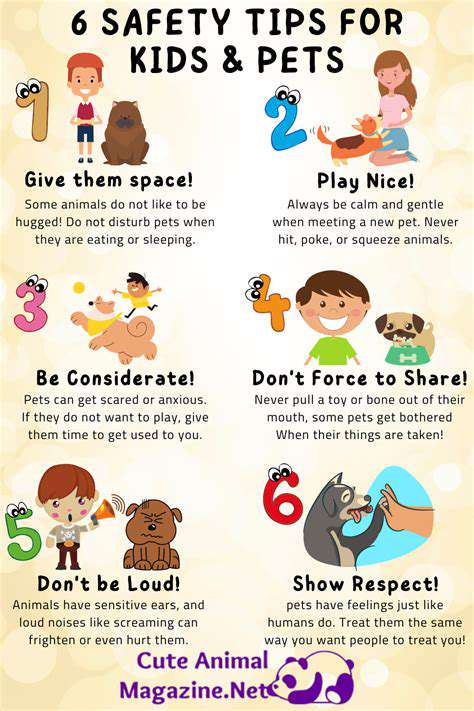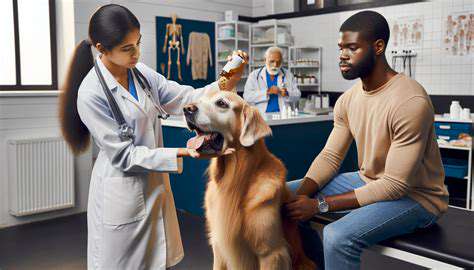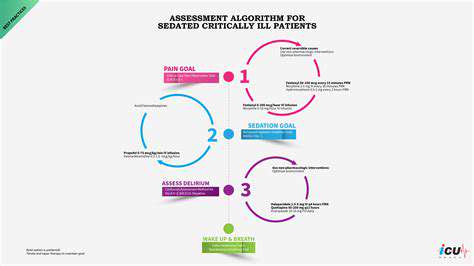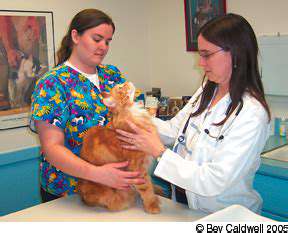Pet Safety Around Children: Supervision and Education

Safe Interaction Techniques for Young Pet Lovers
When introducing children to pets, establishing safety guidelines from the start creates lasting positive experiences. The foundation of pet safety lies in teaching kids that animals aren't toys, but living creatures with feelings and boundaries. I've found through experience that children respond best when shown concrete examples - demonstrate how to extend a hand for sniffing before petting, and always move slowly around animals. Supervised interactions are non-negotiable, particularly during the initial bonding period when neither child nor pet fully understands the other's cues.
From my observations, the most effective method involves teaching children the three-second rule - gentle strokes lasting just a few seconds, then pause to observe the animal's reaction. This technique builds awareness that pets need breaks during interactions. Young children especially benefit from practicing on stuffed animals first, learning appropriate pressure and areas to touch before meeting real pets.
Recognizing Household Dangers for Pets
Our homes contain countless potential hazards that children should learn to identify. Beyond the obvious dangers like chocolate and cleaning supplies, less apparent threats include sugar-free gum (containing xylitol), certain houseplants, and even some types of mulch. Creating a pet-safe zone where children can help place all dangerous items out of reach fosters responsibility while protecting animals.
Through trial and error, I've discovered that turning hazard identification into a game works wonders. Try a safety scavenger hunt where kids search for potential dangers (with supervision). This practical approach helps cement the lessons far better than simple lectures. Electrical cords, small objects that could be swallowed, and unsecured trash cans should all be on the checklist.
Tailoring Safety to Different Pets
Each animal species - and often individual pets within species - requires unique handling approaches. While dogs might enjoy belly rubs, most cats prefer chin scratches. Small mammals like guinea pigs need full-hand support to feel secure. Teaching children these distinctions prevents stress for animals and frustration for kids. I recommend starting with short, positive interactions and gradually increasing duration as both parties become comfortable.
Body language education proves invaluable here. Help children recognize when a pet has had enough - flattened ears in cats, whale eye in dogs, or attempts to hide in small animals. Understanding these signals prevents most negative interactions before they occur.
Preparing for the Unexpected
Emergencies require calm, informed responses. Children should memorize basic information like the veterinarian's phone number and know where first aid supplies are kept. Role-playing different scenarios builds confidence - practice calling for help, describing what happened, and following instructions. Simple skills like applying gentle pressure to a wound or safely restraining a pet during first aid can make all the difference.
I've found that creating an emergency cheat sheet with pictures helps younger children remember crucial steps. Include photos of warning signs (like excessive drooling or limping) alongside appropriate responses. This visual aid reinforces learning and reduces panic during actual emergencies.
Creating Safe Spaces: Protecting Kids and Pets

Hazard Identification in Shared Spaces
Effective safety begins with thorough environmental assessment. Walk through your home at pet and child height to spot overlooked dangers. This perspective shift often reveals hazards adults normally miss - loose screws at toddler level or chewable cords at puppy height. Document findings and create a rotating safety check routine involving older children.
In my experience, the most successful safety systems combine physical changes with education. After baby-proofing cabinets, explain why to children. Installing pet gates becomes a teaching moment about boundaries. This dual approach creates lasting safety awareness.
Implementing Age-Appropriate Safety Measures
Safety controls should evolve as children grow and pets mature. Toddlers need physical barriers, while school-age children can understand and follow rules. The key is matching safety measures to developmental stages while gradually increasing responsibility. For example, a preschooler might feed pets with supervision, while a preteen could handle walks with check-ins.
I recommend creating safety milestones - specific pet care tasks appropriate for different ages. Celebrate when children master new responsibilities, reinforcing positive behavior. Always pair increased privileges with education about corresponding risks.
Emergency Readiness for Families with Pets
A comprehensive emergency plan accounts for all family members, including furry ones. Practice evacuations with carriers and leashes easily accessible. Designate family members specific roles - who grabs the cat, who secures medications, who calls the vet. This division of labor prevents chaos during actual emergencies.
From personal experience, maintaining an updated go bag with pet supplies (food, medications, vaccination records) saves crucial time. Involve children in checking and refreshing these supplies monthly, turning preparedness into routine rather than panic.
Fostering Responsible Pet Relationships
The Foundations of Responsible Ownership
True pet companionship extends beyond basic care. It's about understanding each animal's unique personality and needs. Children learn responsibility best when given specific, manageable tasks matched to their abilities. Start with simple duties like filling water bowls, progressing to more complex care as skills develop.
I've observed that children who help research their pet's breed characteristics develop deeper empathy. Knowing that herding dogs nip or that some cats dislike being held helps set appropriate expectations from the start.
Creating Safe Home Environments
Pet-proofing requires constant vigilance as both children and pets explore new abilities. Conduct monthly safety audits involving the whole family to identify new risks. This ongoing process teaches children that safety isn't one-time, but requires continuous attention.
One effective technique I've used is creating pet-safe and pet-free zones. Children help designate areas where pets can retreat undisturbed, reinforcing the concept of animal boundaries. Similarly, establish places where pets aren't allowed (like certain furniture) to prevent conflicts.
The Lifelong Benefits of Early Pet Education
Early positive experiences with animals shape lifelong attitudes toward pets. Children who learn respectful interaction grow into adults who advocate for animal welfare. The patience and empathy developed through pet care transfer to human relationships as well.
From years of experience, I can say that families who approach pet ownership as a shared learning journey create the most harmonious households. Mistakes become teaching moments, small victories are celebrated, and the bond between children and pets flourishes in an atmosphere of mutual respect and safety.
Read more about Pet Safety Around Children: Supervision and Education
Hot Recommendations
- Holistic Pet Health: Integrating Approaches
- The Future of Pet Identification: Biometric Scanners
- Service Dogs for PTSD: A Guide to Support
- The Benefits of Non Anesthetic Professional Teeth Cleaning
- Herbal Supplements for Pet Joint Health
- The Intersection of IoT and Pet Wellness
- Healthy Weight Management for Senior Pets
- The Best Pet Beds for Orthopedic Support and Comfort
- Competitive Dog Sports: Agility, Flyball, Dock Diving
- Luxury Pet Hotels: Pampering Your Beloved Pet











